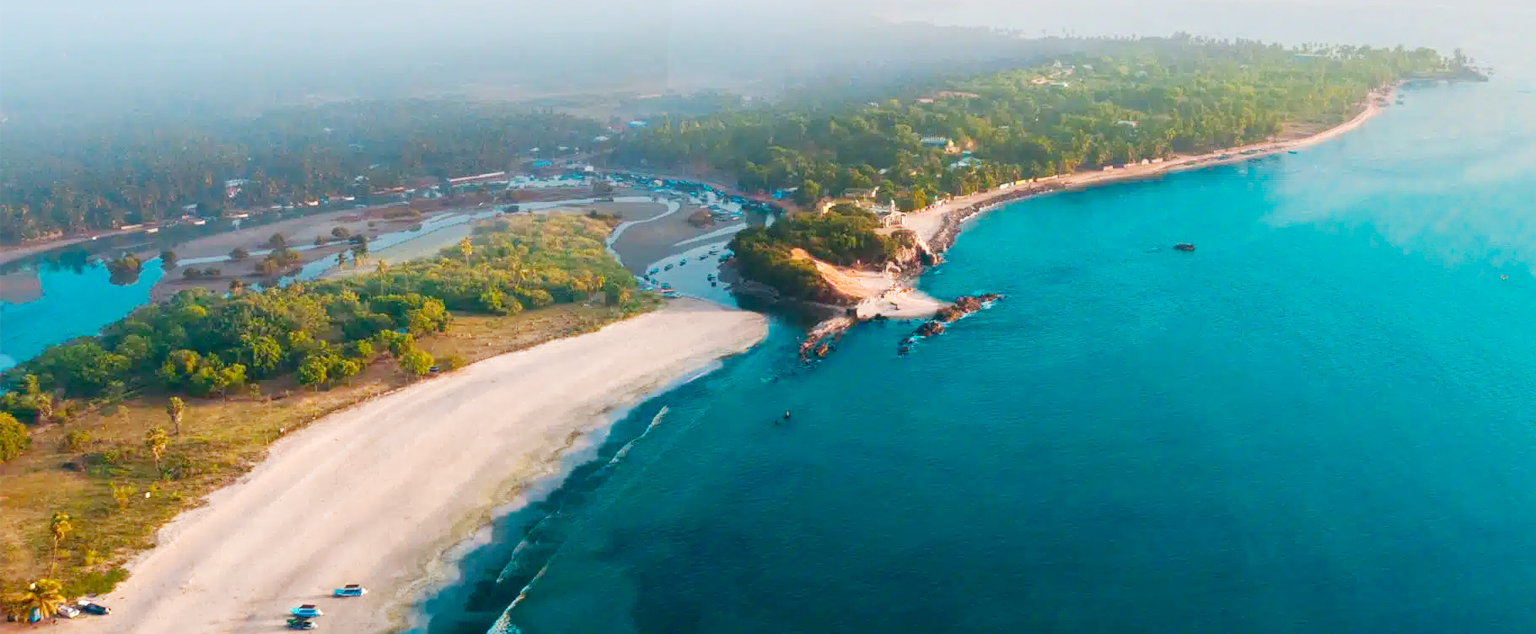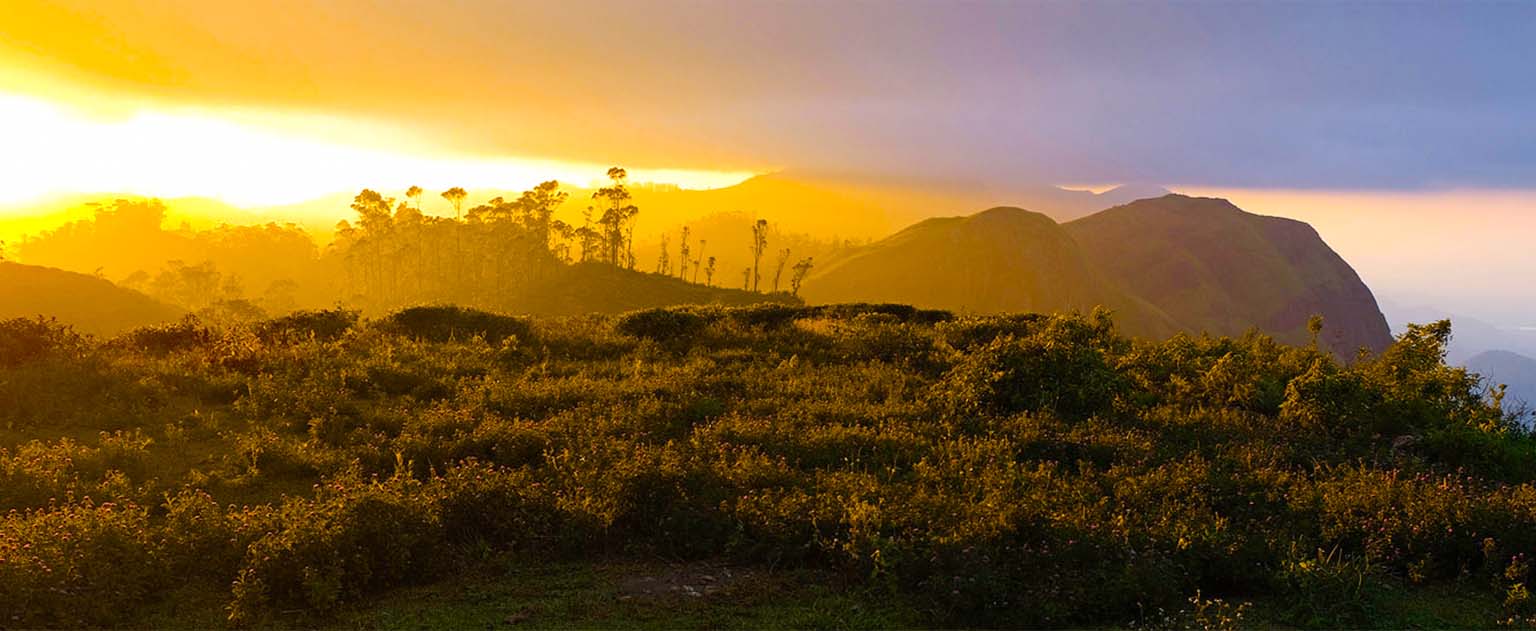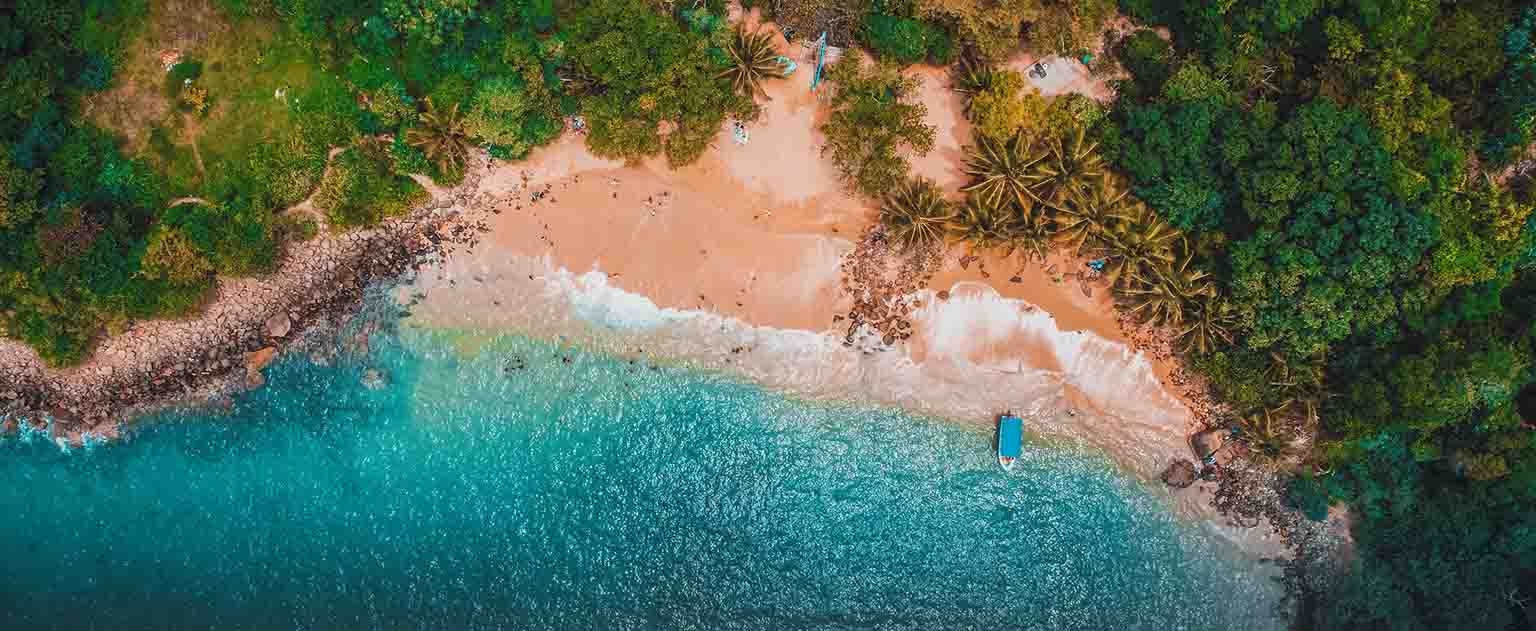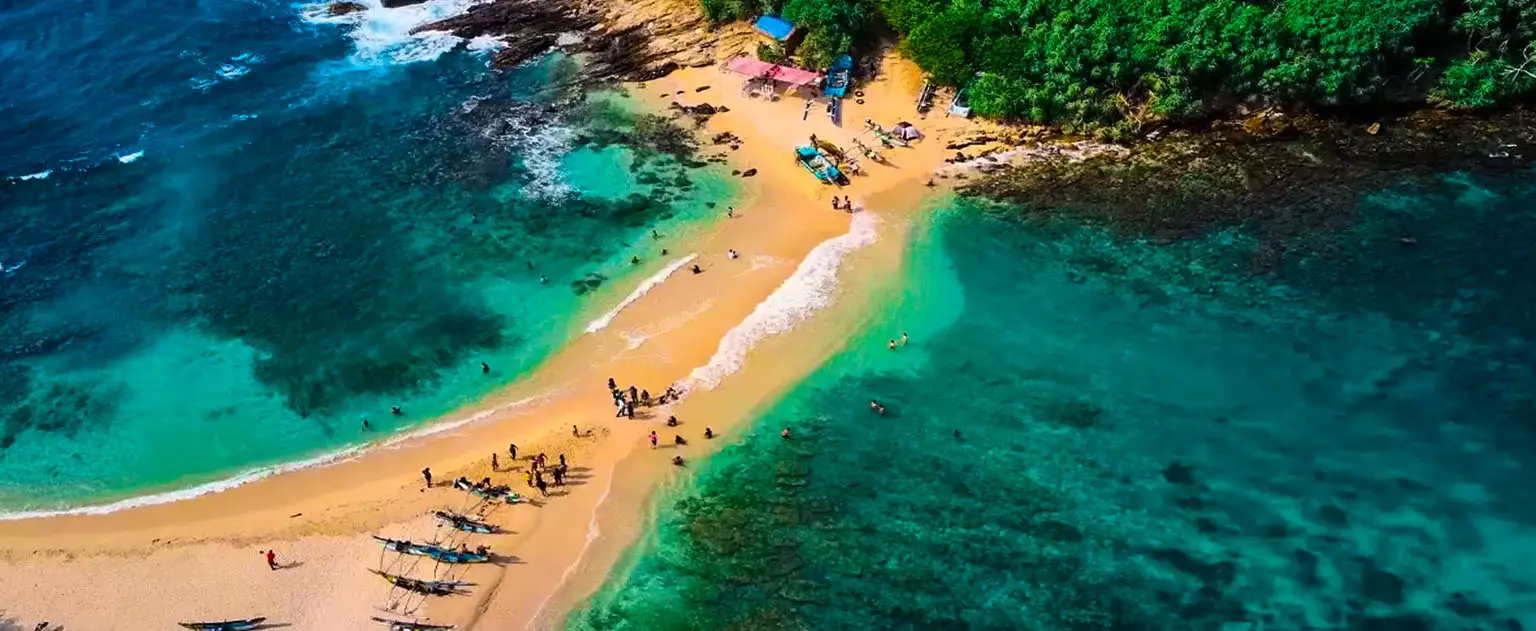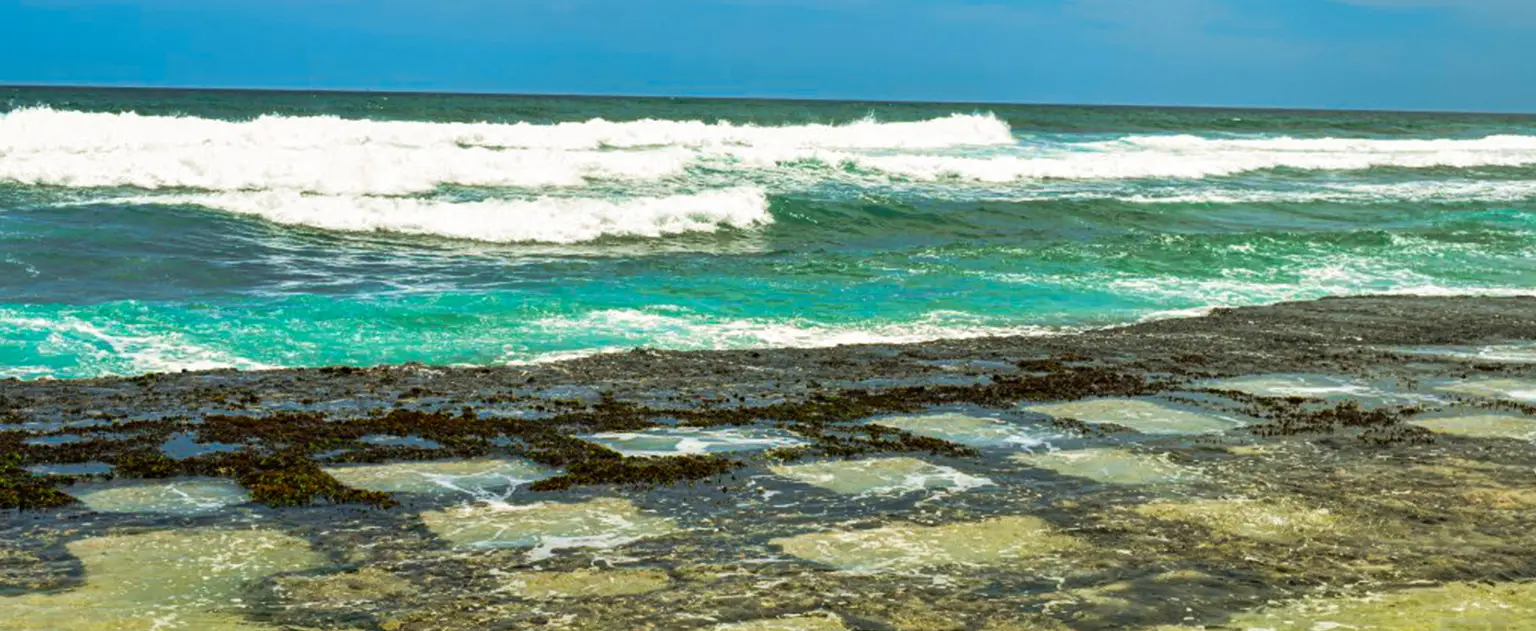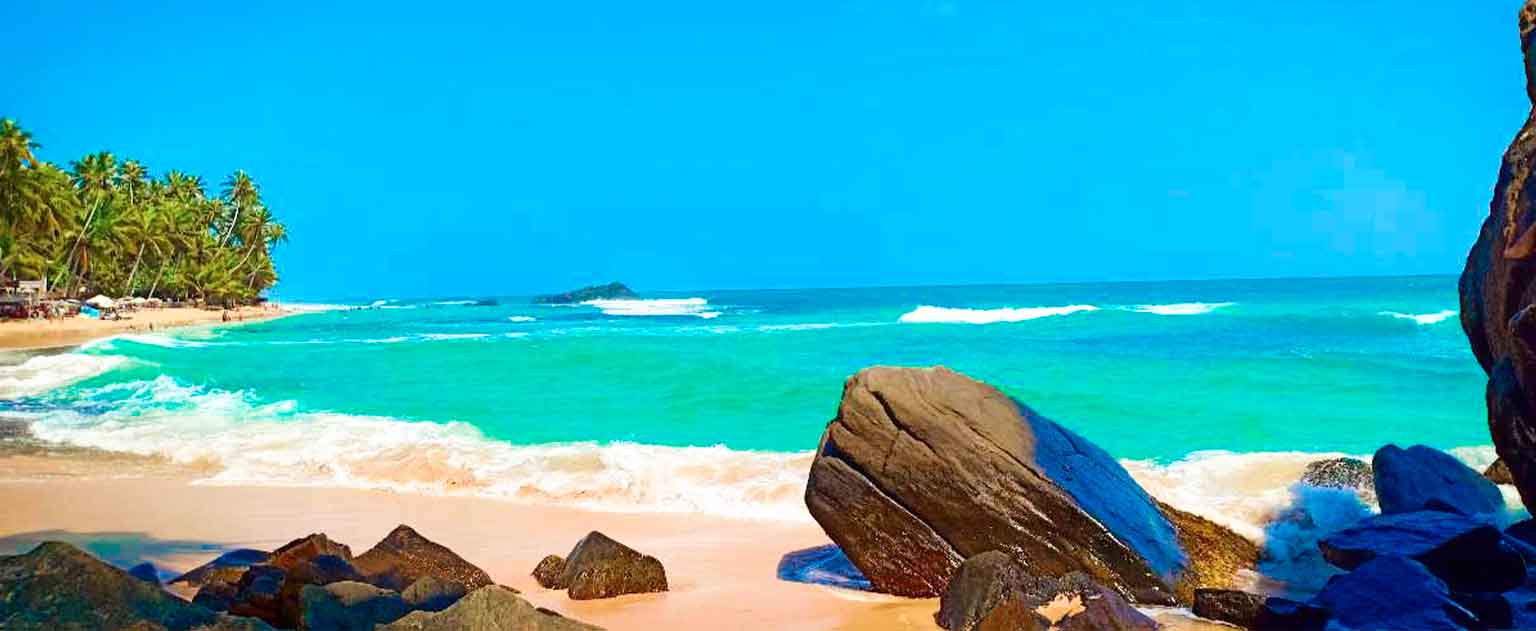Formally founded on October 1, 1833, and administratively reorganized with the 13th Amendment in 1987, the Eastern Province of Sri Lanka is a varied and culturally rich area that includes the districts of Ampara, Batticaloa, and Trincomalee. The province, which has Trincomalee as its capital and Kalmunai as its major city, is 9,996 square kilometers in size and is home to a diverse population of Indian Tamils, Moors, Sinhalese, and Sri Lankan Tamils. Agriculture, fishing, and tourism drive the region’s economy, with current development initiatives concentrated on social services, infrastructure, and education. The Eastern Province is renowned for its stunning beaches, which include the well-known Batticaloa Lagoon, as well as important historical and cultural landmarks, like the Koneswaram Temple in Trincomalee and the Batticaloa Fort.
Pasikuda
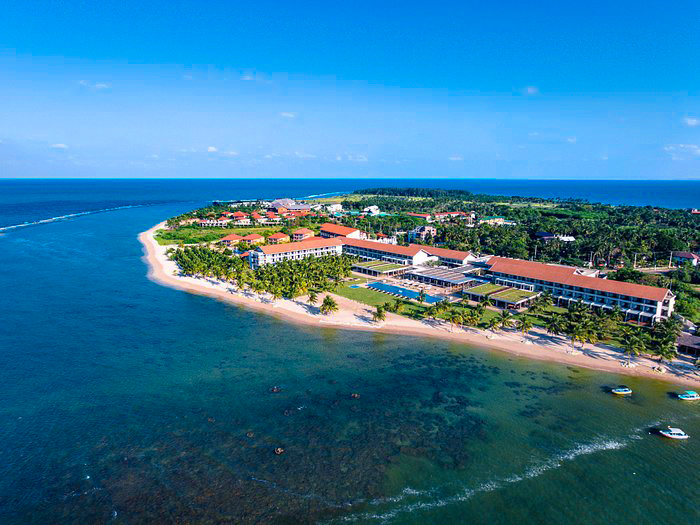
The seaside resort town of Pasikudah, located in Sri Lanka’s Batticaloa District 35 kilometers northwest of Batticaloa, is well-known for its ancient Tamil name, which translates to “Green-Algae-Bay.” Once a charming Tamil village next to Kalkudah, Pasikudah was a hive of tourists until major damage from the 2004 Indian Ocean tsunami and the Sri Lankan Civil War occurred. Today, Pasikudah is witnessing a resurgence in foreign tourism because of increased development and investment. The Pasikudah Mariamman temple is open for exploration by visitors, and the town is easily reachable from Trincomalee and Batticaloa. The closest airport is Batticaloa Airport, which has flights from Colombo. With the end of the civil war in 2009 and the completion of the tsunami recovery work, Pasikudah has become a well-liked travel destination for both domestic and international travelers. Both domestic and foreign investors are showing a great deal of interest in the region, keen to expand beachside tourism. The region is still expanding even though the Sri Lankan government has stringent environmental regulations that prevent some large-scale constructions. Long lengths of shallow reef shoreline, known as Pasikudah, are well-known for allowing visitors to stroll far out into the sea although the water is only a few inches deep and has a milder current than other portions of Sri Lanka’s coastline.
Nilaveli
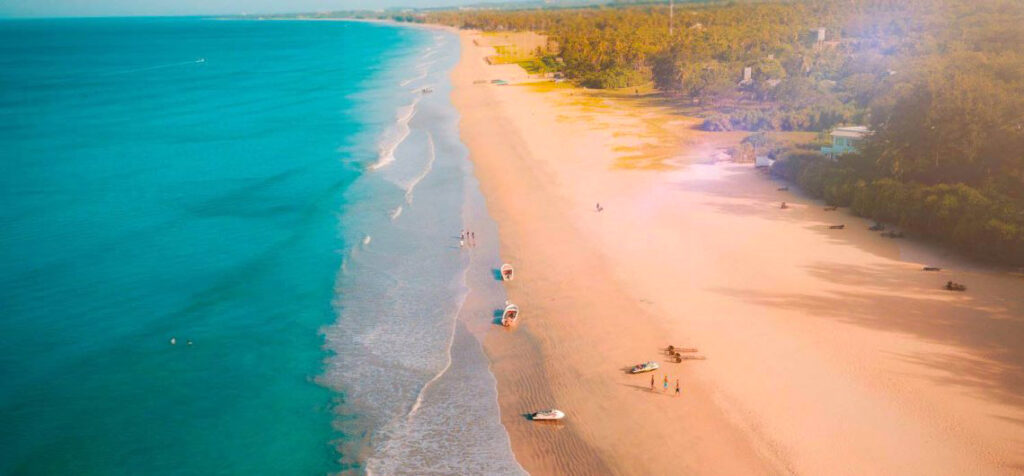
Situated on the northeastern coast of Sri Lanka, Nilaveli possesses a serene charm that has enthralled tourists for generations. This coastal resort town, a suburb of the Trincomalee District, is only 16 km northwest of the busy city of Trincomalee. It has long been prized for its immaculate beaches and rich cultural legacy. Nilaveli was formerly a bustling Tamil village. However, following the disastrous 2004 Indian Ocean tsunami and the turmoil of the Sri Lankan Civil War, the village’s appeal as a tourist destination declined. But since 2010, it has become increasingly well-liked, attracting visitors looking for comfort in its tranquil surroundings.
Pigeon Island National Park, an ecological treasure just one kilometer off Nilaveli’s coast, is essential to the city’s allure. One of the two national parks in the area, this marine sanctuary is home to a wide variety of plants and animals, including colorful coral reefs and a wide range of marine life. Derived from the Tamil words “Nilā” for moonshine and “vèli” for land or open space, the name “Nilāveli” alone conjures images of moonlit nights, a monument to the poetic essence that defines this seaside sanctuary.
Ancient history reverberates at Nilaveli, as demonstrated by Tamil inscriptions from the 10th century that discuss the temple Koneswaram’s importance to the local society. These inscriptions indicate that the temple was formerly bestowed with vast estates, highlighting its crucial function in the religious and pragmatic spheres at that time. In addition to being a site of breathtaking natural beauty, Nilaveli is a living example of resiliency and rejuvenation, where the past and present coexist harmoniously. It welcomes tourists to discover its colorful marine life and legendary shoreline.

